Uncover ancient secrets with a 'Syria in the Bible Map,' revealing its pivotal role in biblical history and prophecy.
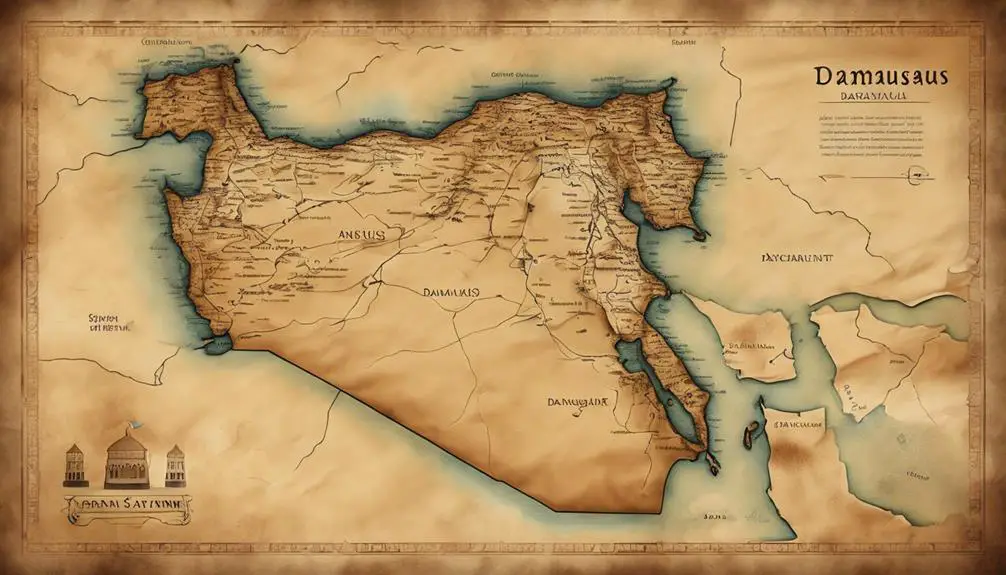
Syria in the Bible Map
Interestingly, the term 'Syria' appears over 70 times in various forms throughout the Bible, highlighting its significance in biblical history. As you explore the ancient maps and texts, you'll uncover how Syria's geographical and political landscapes played pivotal roles in the narratives of Abraham's journey, the lives of the Patriarchs, and the missions of numerous prophets.
The city of Damascus, in particular, stands as a testament to Syria's enduring presence in biblical lore. What's more intriguing is how these historical and prophetic references to Syria might shed light on its cultural and theological significance, inviting you to consider its impact on contemporary understandings of the Bible.
Key Takeaways
- Syria's geography significantly influenced biblical narratives, serving as a backdrop for pivotal events and journeys.
- Damascus holds a profound place in biblical history, highlighted by transformative events like Saul's conversion.
- The intertwining of Syrian locations with prophetic messages underscores Syria's critical role in biblical prophecies and destinies.
- The Aramean connections with biblical patriarchs, through marriages and covenants, reflect Syria's deep-rooted significance in biblical lineage and history.
Syria in Abraham's Journey
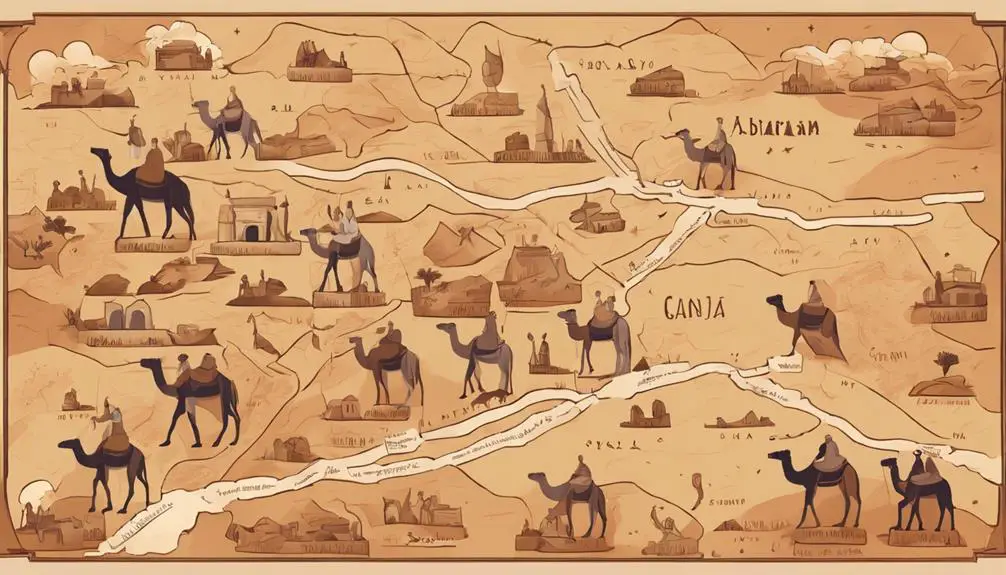
In examining Abraham's journey, it's crucial to recognize Syria's strategic position as a crossroads in the ancient Near East, shaping his travels and interactions. Stemming from Mesopotamian origins, Abraham's trajectory through Syria wasn't merely incidental but deeply entwined with the region's geopolitical and cultural landscapes. This land, serving as a bridge between Mesopotamia and the Mediterranean, influenced not only trade routes but also the movement of peoples and ideas.
You must consider the intricate web of familial alliances that colored Abraham's experiences. These alliances were pivotal, as they were often forged to secure economic resources, ensure mutual protection, or establish marriage ties, significantly impacting the social and political dynamics of the time. Moreover, Syria's position offered Abraham and his descendants access to a diverse array of cultures and peoples, enriching their social fabric and broadening their horizons beyond their Mesopotamian roots.
Understanding Syria's role in Abraham's journey thus requires a nuanced appreciation of how geography, political alliances, and cultural intersections contributed to shaping the patriarch's path. This context not only illuminates the significance of his movements but also highlights the broader implications of Syria as a vital conduit in the ancient world.
Aram and the Patriarchs
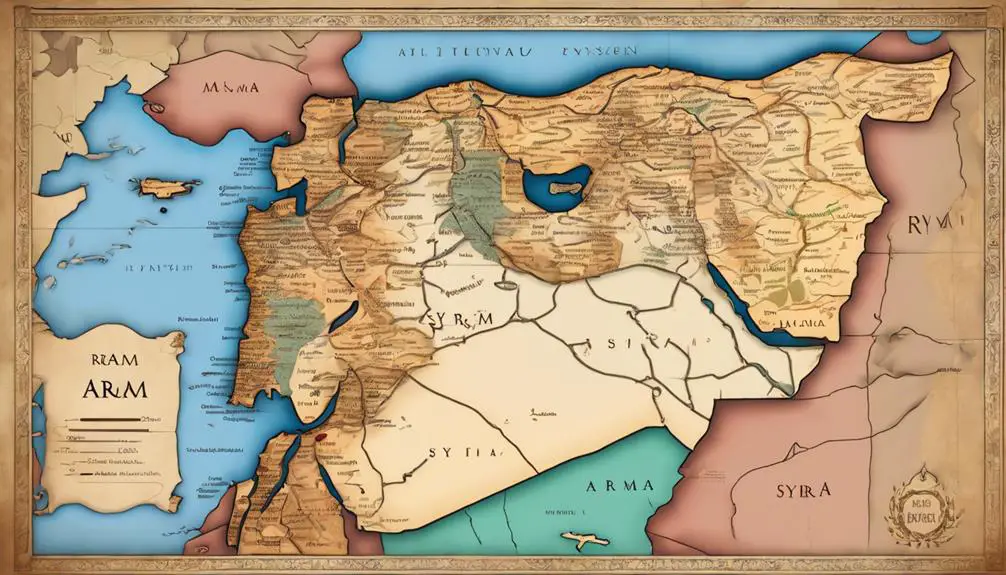
Building on the understanding of Syria's strategic importance in ancient narratives, it's crucial to explore how Aram and the patriarchs interacted within this geopolitical and cultural milieu. The intersection of family lineages and covenant relationships within the region of Aram (modern-day Syria) reveals a complex web of social, political, and theological dynamics that shaped the foundational stories of the Bible.
- Integration of Aramean Culture: The patriarchs' interactions with Aram and its people underscored the blending of cultural and familial ties, enriching the Hebrew lineage.
- Strategic Marriages: Marriages within Aram (Laban and Rebekah's family) emphasized strategic alliances, ensuring the continuity and prosperity of family lineages.
- Covenant Relationships: The covenants made within this context weren't merely personal or familial; they were divinely ordained, linking the people of Aram with the unfolding biblical narrative.
- Geopolitical Alliances: The alliances formed through these interactions had lasting geopolitical implications, influencing the region's power dynamics and the patriarchs' journey.
This exploration sheds light on the intricate layers of historical, cultural, and theological significance embedded within the patriarchs' connections to Aram, offering a richer understanding of their enduring legacy in the biblical narrative.
Prophets and Prophecies
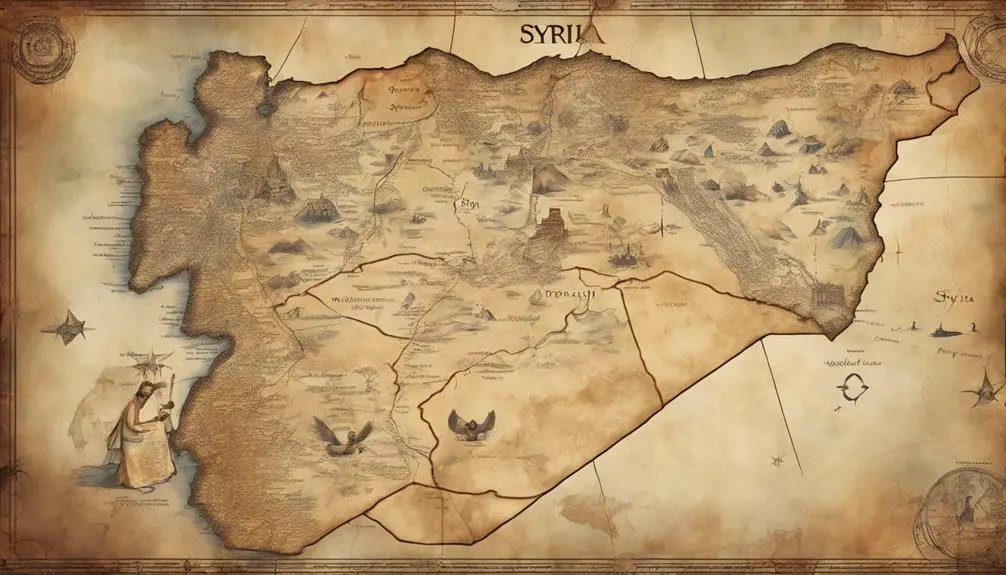
Delving into the realm of prophets and prophecies, it's clear that these foretellers played a pivotal role in shaping both the immediate and long-term theological landscapes of ancient Syria. The prophetic texts, notably Ezekiel's visions and Isaiah's messages, serve as critical scholarly resources in understanding the spiritual and societal dynamics of the time.
Ezekiel's visions, rich with symbolic imagery and divine mandates, illuminate the complexities of Syria's role within the broader biblical narrative. His prophecies, often centered around themes of judgment and restoration, underscore the intertwined destinies of Syria and the Israelite people. Ezekiel's portrayal of Syria, through allegory and direct prophecy, reveals a nuanced understanding of its geopolitical and spiritual significance.
Isaiah's messages, on the other hand, blend forewarning and hope, addressing both the immediate realities and the eschatological future. His prophetic insights into Syria's interactions with Israel and the surrounding nations highlight the intricate web of alliances and conflicts that defined the region. Isaiah's prophecies reflect a deep engagement with the political and spiritual challenges of his time, offering a window into the prophetic perspective on Syria's place within God's unfolding plan.
Together, these prophetic works contribute a rich tapestry of insight, weaving together themes of judgment, redemption, and divine sovereignty that resonate through the annals of biblical history.
Damascus: A Biblical City

As you explore the biblical narrative, it becomes evident that Damascus holds a pivotal role, serving as a central hub for both historical events and prophetic declarations. This ancient city, with its deep-rooted connections to biblical history, offers a rich tapestry of stories and insights that span centuries. Its significance is underscored by:
- The Damascus conversion, a transformative event for Christianity, illustrating the power of faith and redemption.
- Ancient architecture that whispers tales of civilizations past, providing a tangible link to the stories recounted in the Scriptures.
- The city's strategic location, which made it a crossroads for trade, culture, and religious thought, influencing the spread of biblical teachings.
- Prophetic declarations about Damascus, which underscore its importance in the divine narrative and its enduring legacy in biblical prophecy.
Damascus's role in the biblical narrative isn't just a historical footnote but a testament to its enduring spiritual and cultural significance. Its ancient streets and buildings serve as a living museum, offering insights into the complexities of faith, the dynamics of ancient civilizations, and the intricate tapestry of human history woven through the Bible's pages.
Post-Exilic References
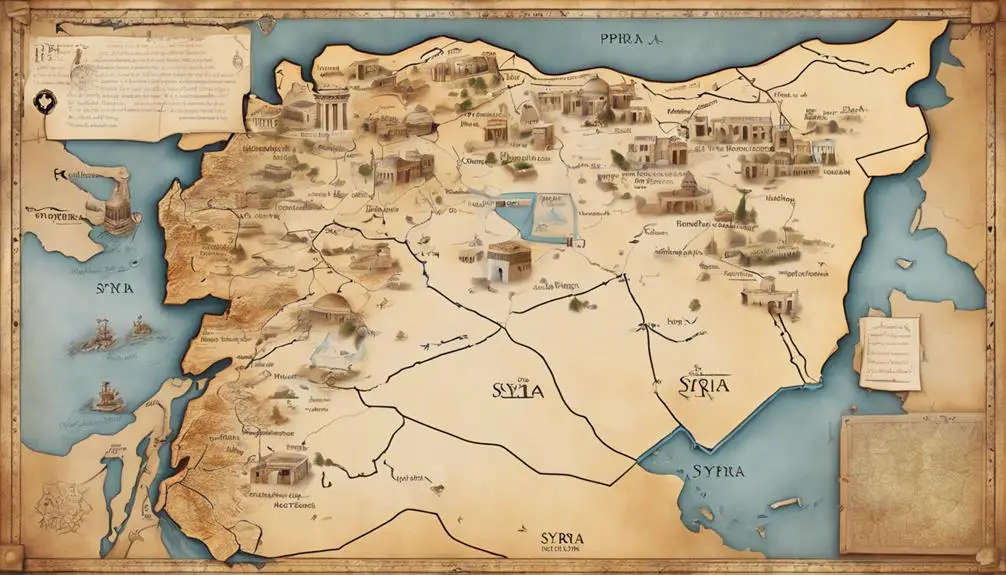
In the post-exilic period, references to key biblical locations illuminate the enduring spiritual landscape that shaped the reconstitution of Jewish identity and religious practices. A pivotal moment in this era was Cyrus's Decree, a monumental event documented extensively in the Hebrew Bible. This decree not only signaled the end of the Babylonian captivity but also authorized the return of the Jewish people to their homeland and the commencement of Temple rebuilding efforts.
The significance of Cyrus's Decree can't be overstated. It represented a divine endorsement of the Jewish people's right to reestablish their religious institutions, thus rekindling a sense of national identity and spiritual revival. The Temple Rebuilding, in particular, stands as a testament to their resilience and commitment to preserving their faith. This process, fraught with challenges, required not just physical reconstruction but also a reimagining of their communal and religious life in the post-exilic context.
Analyzing these events offers deep insights into the complex dynamics of restoration and renewal. The Temple served not merely as a physical edifice but as a symbol of the Jewish people's covenant with God, underscoring the profound relationship between geographical locations and spiritual identity in the biblical narrative.
Frequently Asked Questions
How Does Modern-Day Geographical Understanding of Syria Compare and Contrast With Its Depiction in Biblical Maps?
You're comparing modern geographical views of Syria with its biblical depictions, noticing stark differences. Climate impact and cartographic techniques have evolved, offering a clearer picture today.
Historically, maps were more symbolic, lacking precision present in modern cartography. Now, you see Syria's terrain and climate effects detailed with accuracy. This shift reflects technological and methodological advancements in map-making, contrasting with the broader, less detailed approach seen in ancient biblical maps.
What Role Did Syria Play in the Broader Geopolitical Landscape of the Near East During Biblical Times, Outside of the Direct Biblical Narrative?
In biblical times, Syria played a crucial role in the Near East's geopolitical landscape. Beyond just biblical narratives, its strategic location bridged trade routes, connecting the Mediterranean with Mesopotamia and beyond. This made Syria a vital hub for commerce and cultural exchange.
Moreover, its terrain became battlegrounds for military campaigns as empires sought control over these lucrative routes. Syria's influence in these areas was significant, shaping the region's history and development.
Can Archaeological Evidence Found in Syria Today Provide Insights Into the Accuracy of Its Depiction in Biblical Maps and Stories?
Absolutely, archaeological findings in Syria, including artifact dating and inscription analysis, can shed light on the historical accuracy of its representation in biblical narratives.
By examining these ancient remnants, you're diving into a world where each piece tells a story, corroborating or questioning historical accounts.
This meticulous scrutiny of the past not only enriches your understanding but also bridges the gap between ancient texts and the tangible history they represent.
How Have Interpretations of Syria's Place in the Bible Evolved Among Scholars and Theologians in the Contemporary Era?
You're delving into how scholars and theologians today view Syria's role in the Bible, highlighting a shift in translation evolution and interpretive methodologies.
This evolution has sparked debates, reshaping our understanding of ancient texts. By critically analyzing linguistic nuances and archaeological findings, experts are reevaluating Syria's biblical significance, offering fresh perspectives.
This scholarly journey uncovers the fluid nature of biblical interpretation, reflecting broader changes in academic approaches to religious texts.
What Influence Did Syria's Portrayal in the Bible Have on Its Cultural and Religious Significance in Early Christian, Jewish, and Islamic Traditions?
You'll find that Syria's depiction in the Bible significantly affected its cultural and religious importance in early Christian, Jewish, and Islamic traditions. Its portrayal facilitated trade routes and cultural exchanges, embedding Syria deeply into the spiritual and commercial fabric of these communities.
This strategic position not only enhanced its scriptural role but also its influence on theological interpretations and interfaith relations, spotlighting Syria as a pivotal bridge among these ancient traditions.
Conclusion
In analyzing Syria's biblical footprint, it's evident that its geographical and spiritual significance can't be understated. From Abraham's journey, through the narratives of Aram and the Patriarchs, to the prophecies and the pivotal role of Damascus, Syria's biblical landscape is rich and multifaceted.
Post-exilic references further underscore its enduring relevance. This examination reveals Syria as a crucial thread in the biblical tapestry, offering profound insights into the ancient Near East's religious and cultural dynamics.



Sign up